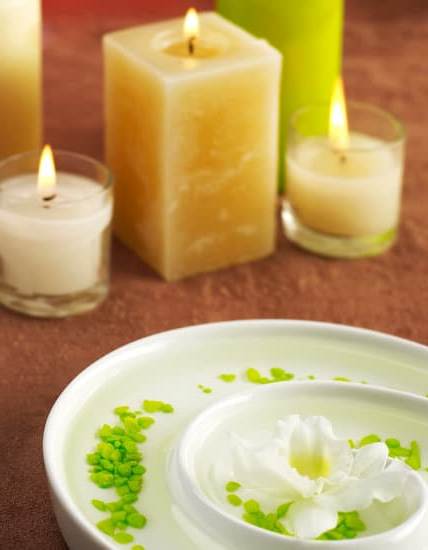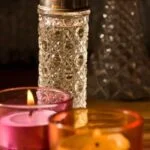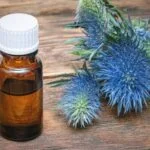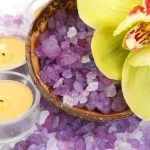Aromatherapy has long been cherished for its ability to promote relaxation, reduce stress, and improve overall well-being. Incorporating a variety of essential oils derived from plants and herbs, this ancient practice harnesses the power of scent to enhance both physical and mental health. Whether through diffusing, inhalation, or topical application, aromatherapy treatments offer a holistic approach to healing and rejuvenation.
The history of aromatherapy dates back centuries, with roots in ancient civilizations like Egypt, Greece, and China. Over time, this practice has evolved into a popular alternative therapy embraced by individuals seeking natural remedies for a range of ailments. From lavender for calming effects to peppermint for revitalization, each essential oil used in aromatherapy boasts unique properties that target specific needs.
With its myriad benefits for mind, body, and spirit, it’s no wonder that aromatherapy has become a staple in spa menus worldwide. From alleviating muscle tension to improving sleep quality, the advantages of aromatherapy treatments are vast and varied. As we delve deeper into the world of aromatherapy, exploring different treatment options and techniques can help us uncover personalized solutions for our wellness needs.
History of Aromatherapy
Aromatherapy has a rich history that dates back thousands of years, with evidence of its use found in ancient civilizations such as Egypt, China, and India. The practice of using plants and their essential oils for medicinal and therapeutic purposes can be traced back to these early civilizations, where aromatic plants were believed to have healing properties for both the body and mind.
The art of aromatherapy has evolved over time, blending traditional knowledge with modern scientific research to create a holistic approach to health and wellness.
Throughout history, aromatherapy has been used for various purposes, including religious rituals, beauty treatments, and healing practices. In ancient Egypt, essential oils were used in the embalming process and in religious ceremonies. In China, aromatic herbs were burned as incense for their therapeutic effects on the body and spirit. The practice of aromatherapy spread throughout Europe during the Middle Ages when herbal remedies were commonly used to treat various ailments.
As the field of aromatherapy continued to develop, it gained popularity in the 20th century thanks to the pioneering work of individuals like Rene-Maurice Gattefosse and Jean Valnet. Gattefosse coined the term “aromatherapy” after discovering the healing properties of lavender oil when he accidentally burnt his hand and found that lavender oil helped to heal his burn without scarring.
Valnet furthered research on essential oils’ therapeutic benefits by using them to treat wounded soldiers during World War II. Today, aromatherapy continues to be a widely practiced form of complementary medicine, offering natural solutions for enhancing health and well-being.
- Ancient civilizations such as Egypt, China, and India used aromatic plants for medicinal purposes
- Aromatherapy evolved over time blending traditional knowledge with modern scientific research
- Pioneers like Rene-Maurice Gattefosse and Jean Valnet contributed to popularizing aromatherapy in the 20th century
Different Types of Aromatherapy Oils
Aromatherapy treatments often rely on a variety of essential oils, each bringing its own set of unique properties and benefits. Here are some of the most popular types of essential oils used in aromatherapy treatments:
- Lavender Oil: Known for its calming and soothing properties, lavender oil is commonly used to promote relaxation and alleviate stress and anxiety.
- Peppermint Oil: Peppermint oil is invigorating and refreshing, often used to boost energy levels, improve focus, and relieve headaches and muscle tension.
- Tea Tree Oil: With powerful antibacterial and antifungal properties, tea tree oil is frequently used for skin conditions like acne or fungal infections.
- Lemon Oil: Bright and uplifting, lemon oil is often used to enhance mood, increase mental clarity, and purify the air in aromatherapy blends.
Each essential oil has its own distinct aroma and therapeutic qualities that can be tailored to individual needs during an aromatherapy treatment session. Whether you’re looking to relax, invigorate your senses, or address specific health concerns, there’s likely an essential oil that can support your goals.
When creating an aromatherapy treatment menu, it’s important to consider the unique properties of each essential oil and how they may complement one another. By offering a variety of options that cater to different preferences and wellness goals, spas and wellness centers can provide a truly personalized experience for their clients. From calming lavender blends to energizing citrus combinations, the possibilities for customizing aromatherapy treatments are endless.
Benefits of Aromatherapy Treatments
Aromatherapy treatments offer a multitude of benefits for both physical and mental well-being. One of the key advantages is stress relief, as certain essential oils like lavender and chamomile are known for their calming properties which help reduce anxiety and promote relaxation.
In addition to stress reduction, aromatherapy can also aid in improving sleep quality. Essential oils such as bergamot and ylang-ylang have sedative effects that can enhance the quality of sleep when used in a diffuser before bedtime.
Moreover, aromatherapy treatments can positively impact mood and emotional health. Scents like citrus oils (e.g. lemon and orange) are often used to uplift mood and boost energy levels.
These invigorating scents can help combat feelings of fatigue or low energy, providing a natural pick-me-up throughout the day. For individuals dealing with specific emotional issues like grief or sadness, floral scents such as rose or geranium may offer comfort and support by promoting a sense of emotional balance and well-being.
On a physical level, aromatherapy treatments can address various health concerns such as headaches, muscle pain, and respiratory issues. Peppermint oil is commonly used to alleviate headaches due to its soothing properties that help relax tense muscles in the head and neck region.
Additionally, eucalyptus oil is known for its decongestant effect which makes it beneficial for respiratory conditions like colds or sinus congestion. The diverse range of essential oils available allows for customized aromatherapy treatment menus tailored to address specific health needs effectively.
| Benefit | Essential Oil |
|---|---|
| Stress Relief | Lavender, Chamomile |
| Improved Sleep Quality | Bergamot, Ylang-Ylang |
| Mood Enhancement | Citrus Oils (Lemon, Orange) |
Aromatherapy Treatment Techniques
Aromatherapy, a holistic healing treatment that uses essential oils derived from plants to promote physical and emotional well-being, offers various methods of administration. These techniques aim to maximize the therapeutic benefits of essential oils and enhance the overall aromatherapy experience. Among the most common ways to administer aromatherapy treatments are diffusing, inhalation, and topical application.
Diffusing
Diffusing essential oils involves dispersing the aromatic molecules into the air through a diffuser device. This method allows for easy inhalation of the oils’ scent and absorption of their therapeutic properties. Diffusers come in different types, such as ultrasonic, nebulizing, and heat-based, each offering unique benefits in terms of dispersing essential oils effectively throughout a space.
Inhalation
Inhalation is another popular method of administering aromatherapy treatments. This technique involves breathing in the aromatic vapors released by essential oils. Inhalation can be done directly from a bottle, by adding drops of essential oil to hot water for steam inhalation, or by placing a few drops on a tissue or cotton ball for personal inhalation throughout the day.
Topical Application
Topical application of essential oils involves applying diluted oils directly to the skin through massages, compresses, or skincare products like lotions and creams. When using this method, it is crucial to dilute essential oils with a carrier oil to prevent skin sensitivities or reactions. Topical application allows for direct absorption of the oils into the bloodstream and provides targeted relief for specific areas of concern during an aromatherapy treatment session.
By understanding and incorporating these diverse methods of administering aromatherapy treatments into your routine or spa services menu, you can cater to individual preferences and needs while maximizing the therapeutic benefits of essential oils. Whether diffusing calming lavender oil in a relaxation room, offering uplifting citrus inhalations during massages, or custom-blending personalized topical solutions for skincare treatments, there are endless possibilities to explore with an aromatherapy treatment menu tailored to enhance overall well-being.
Creating a Custom Aromatherapy Treatment Menu
Aromatherapy is a holistic healing treatment that uses natural plant extracts to promote health and well-being. The practice involves using essential oils derived from various plants to enhance both physical and psychological health. Each essential oil has its own unique properties, and when combined in the right proportions, they can create a personalized aromatherapy treatment menu tailored to individual needs and preferences.
When creating a custom aromatherapy treatment menu, it is essential to consider the specific goals of the individual receiving the treatment. Whether the focus is on relaxation, stress relief, improved sleep quality, or boosting energy levels, selecting the right combination of essential oils is crucial. For example, lavender essential oil is renowned for its calming effects and is often used to promote relaxation and reduce anxiety, while peppermint essential oil is invigorating and can help increase alertness.
Another important factor to consider when crafting a personalized aromatherapy treatment menu is any existing health conditions or sensitivities that the individual may have. Some essential oils may trigger allergic reactions or interact with certain medications, so it is vital to conduct thorough research or consult with a qualified aromatherapist before selecting oils for the treatment menu.
By taking into account these individual factors, a tailored aromatherapy treatment plan can be developed to maximize the benefits and enhance overall well-being.
| Essential Oil | Benefits |
|---|---|
| Lavender | Calming effects, relaxation, anxiety reduction |
| Peppermint | Invigorating, increased alertness |
Popular Aromatherapy Treatment Menu Options
Aromatherapy has gained popularity in recent years as people seek natural ways to relax, rejuvenate, and improve their overall well-being. Spas and wellness centers have embraced this trend by offering a wide range of aromatherapy treatments aimed at providing holistic healing experiences for their clients. From massage oils to diffuser blends, there are many options available for those looking to indulge in the therapeutic benefits of essential oils.
Relaxation Massage With Lavender
One of the most popular aromatherapy treatment menu options at spas is the relaxation massage with lavender essential oil. Lavender is known for its calming and soothing properties, making it ideal for reducing stress and promoting relaxation. The gentle scent of lavender combined with the therapeutic touch of a skilled massage therapist can create a deeply relaxing experience that melts away tension and leaves you feeling refreshed and rejuvenated.
Energy-Boosting Citrus Body Scrub
For those looking to invigorate their senses and revitalize their body, an energy-boosting citrus body scrub is a fantastic option. Citrus essential oils like lemon, orange, or grapefruit are known for their refreshing and uplifting qualities. When used in a body scrub, these invigorating scents can help brighten your mood, increase energy levels, and promote a sense of vitality. This treatment not only exfoliates the skin but also awakens the mind and spirit.
Stress-Relief Aromatherapy Facial
In today’s fast-paced world, stress can take a toll on our skin as well as our mental health. A stress-relief aromatherapy facial combines the benefits of skincare with the power of essential oils to provide a nurturing experience that targets both external and internal sources of tension.
The gentle facial massage coupled with calming aromas like chamomile or rose can help alleviate feelings of anxiety, promote relaxation, and leave your skin glowing with renewed radiance. This popular treatment is perfect for those looking to unwind and pamper themselves after a long day.
These are just a few examples of the many aromatherapy treatment menu options available at spas and wellness centers. Whether you’re seeking relaxation, rejuvenation, or relief from specific ailments, there is likely an aromatherapy treatment that suits your needs. Be sure to inquire about customizing your experience to ensure that you receive personalized care tailored to your preferences and goals.
Tips for Incorporating Aromatherapy at Home
Incorporating aromatherapy into daily routines and self-care practices at home can be a wonderful way to promote overall well-being and relaxation. By following some practical advice, you can harness the power of essential oils to create a soothing atmosphere and enhance your physical and mental health. Whether you are looking to reduce stress, improve sleep quality, or boost your mood, aromatherapy can be a simple yet effective tool in your self-care arsenal.
One of the easiest ways to incorporate aromatherapy at home is through the use of essential oil diffusers. These devices disperse the aroma of essential oils throughout a room, creating a calming ambiance. You can choose from a variety of essential oils depending on your needs – whether it’s lavender for relaxation, peppermint for energy, or eucalyptus for congestion relief. Experimenting with different scents can help you find what works best for you and your preferences.
Another way to enjoy the benefits of aromatherapy at home is by adding a few drops of essential oils to your bath or shower routine. The steam will help distribute the scent while you relax and unwind.
Additionally, creating DIY room sprays or linen sprays with essential oils can freshen up your space and provide a burst of fragrance whenever needed. By incorporating these simple practices into your daily life, you can reap the therapeutic benefits of aromatherapy without having to visit a spa or wellness center with an aromatherapy treatment menu.
Frequently Asked Questions
What Are the Different Types of Aromatherapy Treatments?
Aromatherapy treatments come in various forms, including aromatic baths, inhalation therapy, and massage with essential oils. Each type of treatment aims to promote relaxation, improve mood, and enhance overall well-being.
What Does a Full Body Aromatherapy Massage Include?
A full-body aromatherapy massage typically involves the use of essential oils that are diluted in a carrier oil and applied to the skin through gentle massage techniques. The therapist may focus on different areas of the body to promote relaxation, reduce muscle tension, and alleviate stress.
What Happens During Aromatherapy Treatment?
During an aromatherapy treatment session, the therapist will first assess the client’s needs and preferences to select suitable essential oils. The client then inhales the aroma or receives a massage with the oils.
The therapeutic effects of the essential oils work to calm the nervous system, uplift mood, and address specific concerns such as pain or insomnia. Overall, aromatherapy treatments aim to create a sense of holistic well-being for the client.

Are you looking for a natural way to improve your health and wellbeing?
If so, aromatherapy may be the answer for you.





